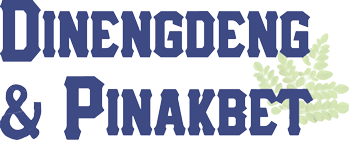
Beyond this Election
Gilbert S.C. Keith-Agaran | Photos courtesy Keith-Agaran
Over the last month or so I’ve been filling out surveys from the news media, unions and advocacy groups sent to all candidates running in the upcoming election. Most have word limits which can either spur clearer statements or which give short shrift to the nuance and complexity of many issues.
This is a reapportionment year so every state legislative seat is on the ballot, including my Central Maui Senate seat. In Maui Nui, we have open seats for the retiring Senator Rosalyn Baker’s West and South Maui (with a small part of Maui Lani and Waikapū) Senate Seat, and Tina Wildberger’s South Maui and Angus McKelvey’s West Maui (with Waihe‘e and Waiehu and Kahakuloa) house seats. The Mayor, the entire County Council, a vacant Congressional seat, U.S. Senator Brian Schatz and the Governor and Lt. Governor will also be up for election.
I don’t know what other candidates are writing but I think making Maui a better place to live, work, play and raise our families must be top of mind. The next Governor and Legislature (and the Mayor and County Council members as well), whether in good or bad economic conditions, should want to chip away at the costs of living—housing, childcare, wages and taxes—that make life challenging for residents even in good times.

Photo courtesy Gil Keith-Agaran
I have no opponent this year. I will be re-elected as long as one person casts a ballot for me in the August Primary Election—even though my wife, mother and sister insist I need at least their three votes, too.
So in answering surveys, I’m mulling over what can and should be done next year. The ongoing pandemic and now lingering inflation disclosed what we knew: the number of working families living on the financial edge remains way too high.
In recent legislative sessions—even during the Covid-induced economic downturn—the Legislature made down payments on addressing those issues. We adopted for example a package of childcare/preschool initiatives (expanding Open Doors, building classrooms at UH campuses and libraries). We also piloted directly subsidizing (with State and County funded infrastructure) for sale residences (as government programs support HUD income qualified rentals) to bring housing prices down for local working families. In Central Maui, we’ve worked with State and County agencies to identify key projects that facilitate home construction while meeting State needs (roadways, sewer and water that will serve new schools or other state facilities).
Over the last six years, additional funding has been directed to the State housing agencies to provide more resources for HUD-type rental housing developments. But we should be clear housing is needed for Hawai‘i’s working families that is affordable for what people are paid in the islands. Developing housing for local working families—not just for families qualifying for the “affordable” units defined and based on HUD income guidelines and limits—must be prioritized.

Photo courtesy Gil Keith-Agaran
We continued to tackle quality of life issues this year. We made a billion-dollar investment in housing (including $600 million for Hawaiian Home Lands) as well as $200 million for additional pre-school facilities.
But we will need to monitor and build on the investments made in recent budgets and other housing initiatives (i.e. Act 236 [SB3048 CD1]—restructuring funds available to Hawai‘i Housing, Finance and Development Corporation to support housing projects; Act 234 [SB2479 CD1]– allowing Hawai‘i Public Housing Authority to develop mixed-income and mixed-financing projects; HB1837 CD1—establishing a Yes In My Backyard working group to identify housing development impediments; Act 184 [SB2898 CD1] and HB1600 CD1 providing funding for transient oriented development planning throughout the islands). With a new Governor being sworn in this December, the Legislature needs to make sure these policy directions continue or debate what the new Administration will be proposing.
Along with housing investments, the Legislature also raised the minimum wage (Act 114 (2022) [HB2510 HD2 SD1 CD1]) and made the State earned income credit permanent and refundable. We also passed a tiered tax rebate to provide a larger payment to taxpayers with lower incomes (Act 115 [SB514 SD1 HD1 CD2]); Act 115 provides a tax refund of $300 for taxpayers who earn less than $100,000 a year (or couples earning less than $200,000), and $100 for taxpayers who earn $100,000 or more (or couples earning $200,000 or more).
We also resumed funding grants to local non-profits who provide services to the neediest residents and save the State money in doing so, increasing the total amount of non-profit grants allocated in the state budget for that purpose.
But the challenge remains making sure that leaving Hawai‘i is never just an economic necessity—that residents and our children can make a reasonable choice to live and raise their families in the islands. I don’t subscribe to the general notion that any “brain drain” is a tragedy—local students and residents should be free to pursue their dreams even if that means leaving the islands—and we as a community should invest in preparing them to compete successfully in whatever place they choose to live and in whatever fields and occupations that is their passion.
The rapid return of tourism surprised most people, including economists who did not expect the economic recovery until 2024 or later. But the reduction in visitors during the economic shutdown spurred efforts to change the trajectory of the visitor industry from unbridled growth to something more balanced.
Any diversification (and this can’t continue as simply a buzz word) must promote self-sufficiency and developing local workforce skills. In the short-term, no alternative can completely replace the number of jobs visitor accommodations and vendors for hotels, restaurants and activities provide. Maui lacks large scale military investments or presence like Pearl Harbor, Marine Corps Base Kāne‘ohe, the submarine base on Kaua‘i or the training area on the Hawai‘i island, as an additional economic base. Our County also does not get direct economic benefits of a major research university in Mānoa and other higher education institutions, or the financial centers operating from urban Honolulu. As a result, Maui County remains more dependent on the visitor industry than other counties. We can certainly better balance visitor impacts on our local population, infrastructure and natural areas, without succumbing to the notion that Hawai‘i should cater to and only attract affluent visitors. A trip to Hawai‘i should remain branded as a special thing with a truer cultural experience.
Government needs to be strategic and build on existing local opportunities—providing tax incentives or other benefits to attract the same businesses our sister states and other Pacific countries want may not pan out unless carefully crafted. Instead, we need to be both strategic and opportunistic in shifting more of our economy into areas building resilience.
In short, any diversification of our economy must promote self-sufficiency and develop workforce skills in alignment from lower education to college and vocational training. The pandemic showed that improving local self-sufficiency in key areas should be priorities. Public investments should advance Hawai‘i’s own resiliency in health care (locally training nurses, technicians and physicians), agriculture (supporting farmers with land, water and facilities/equipment to develop value-added products) and alternative energy (developing, adopting, proving and marketing technologies).
Maui Health now hires nurses directly from the University of Hawai‘i Maui College (UHMC) and provides on the job training. Maui Health, needing local medical technicians to reduce off-island contractors, should work with UHMC to develop a program. John A. Burns School of Medicine, with legislative funding, is expanding residency and medical education to the neighbor islands. UHMC, the Farm Bureau/Farmers Union and local entrepreneurs are collaborating to develop value-added products from local crops. The Legislature allocated funding to create centralized kitchens for clusters of schools—a limitation for the Department of Education to buy more locally grown produce, poultry and livestock has been the federal requirements on processing those products to qualify for the federally subsidized lunch and breakfast programs. Centralized kitchens will help bridge that gap. The Legislature also funded UHMC’s expansion of vocational education to support entry into the building trades.
In a couple of weeks the community will have an initial opportunity to choose who will serve as Maui Mayor, County Councilmembers and legislators. Take time to find out where these candidates want to take us.
 Gilbert S.C. Keith-Agaran has represented Central Maui in the Hawai‘i State Senate since 2013. He is running unopposed in the upcoming August Primary Election and needs at least his own vote to win a four-year term. The legislative representatives for Central Maui will be decided in August: Troy Hashimoto is unopposed in Wailuku while the Justin Woodson-Sam Peralta contest for Kahului will be determined in the Democratic Primary.
Gilbert S.C. Keith-Agaran has represented Central Maui in the Hawai‘i State Senate since 2013. He is running unopposed in the upcoming August Primary Election and needs at least his own vote to win a four-year term. The legislative representatives for Central Maui will be decided in August: Troy Hashimoto is unopposed in Wailuku while the Justin Woodson-Sam Peralta contest for Kahului will be determined in the Democratic Primary.
